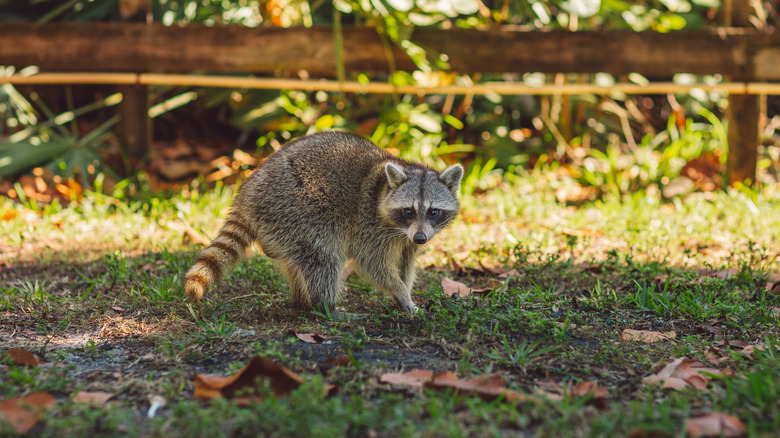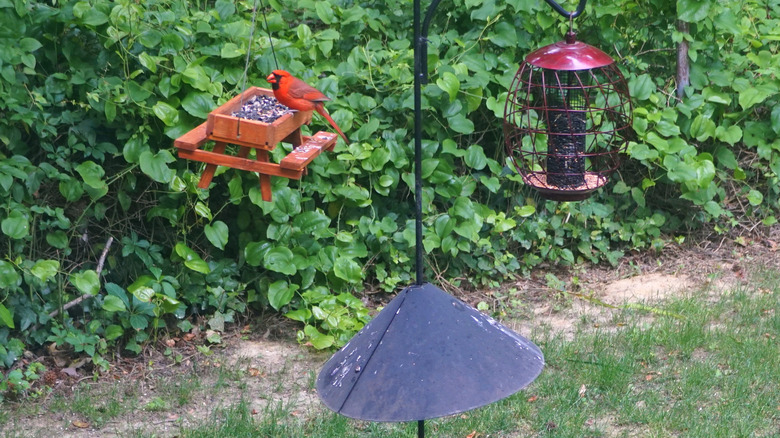The Surefire Way To Ensure Hungry Racoons Won't Touch Your Hummingbird Feeders
A peaceful morning on your porch watching hummingbirds flutter around your feeder sounds perfect ... right up until you find yourself having to refill your feeder again and again. Surely the hummingbirds couldn't have gulped it all down that quickly. Well, it might not be hummingbirds drinking up all that delicious sugar water, but rather, a more unexpected guest — raccoons!
Raccoons have a notorious reputation for being curious and persistent scavengers, always on the lookout for a free meal. The sugar water in your hummingbird feeders is an irresistible treat for them, thanks to its high sugar content. This sugary drink provides raccoons with quick energy boosts and is relatively easy to attain for the smart critters. Unfortunately, their nocturnal snacking leaves hummingbirds high and dry the next day, unable to enjoy their nectar. Furthermore, an easy food source encourages raccoons to visit more frequently or even take up residence nearby, potentially leading to further garden disruptions.
So, what's a well-meaning homeowner to do when their hummingbird haven turns into raccoon central? The solution is simple — bring your feeder inside once the sun sets. Raccoons are mostly nocturnal, actively searching for food under the cover of darkness, making nighttime the perfect opportunity for them to empty your feeder. By removing the temptation at night, you effectively block these bandits' midnight feasts, and by morning, your feeder is ready for the intended guests.
What other methods can you use to deter raccoons from the hummingbird feeder?
We all have demanding schedules and a long list of chores, so remembering to move your hummingbird feeders in each night may be a challenge. However, keeping your feeders completely out of sight of raccoons is truly the only foolproof way to prevent their visits. Other methods for deterring raccoons from your feeders may be easier, but each has its drawbacks. One solution is using a pole or a cheap baffle on the pole of your hummingbird feeder. These devices are obstacles placed on the pole or beneath the feeder, designed to confuse and slow down raccoons by creating a barrier they find challenging to maneuver around. Although not infallible, they provide an additional layer of defense.
Another option is stringing the feeder in between trees, leaving a long line that holds the feeder up and high off the ground. However, given raccoons' impressive climbing and balancing skills, they may still manage to reach them, especially if the feeder is under a strong tree branch. Raccoons are clever and adaptable, especially when it comes to accessing food. They'll jump, climb, and pretty much do whatever they can to get to your feeder. So, while you might have other options at your disposal, the best thing you can do to keep your hummingbirds fed and your yard raccoon-free is to bring the feeder inside every night.

